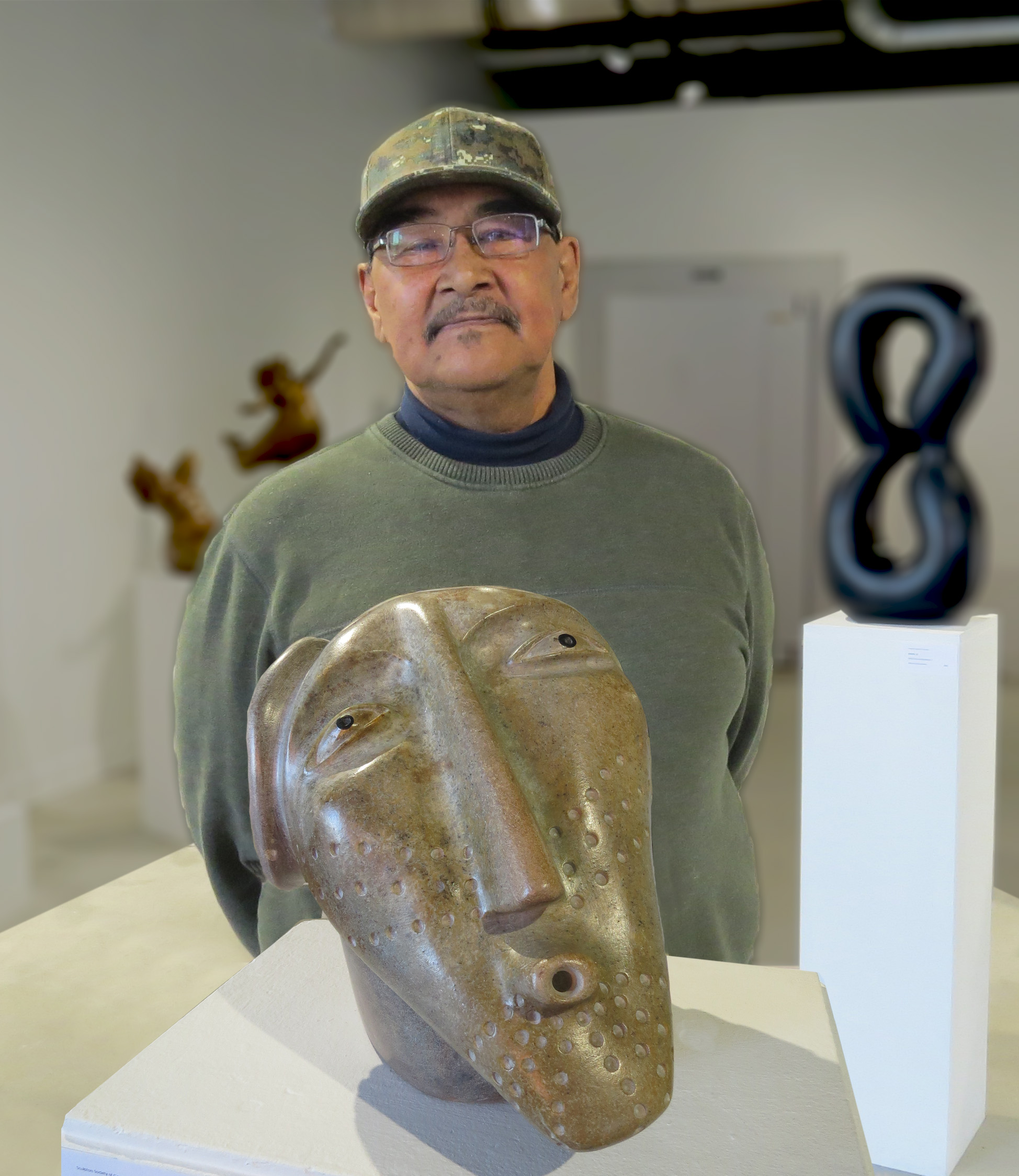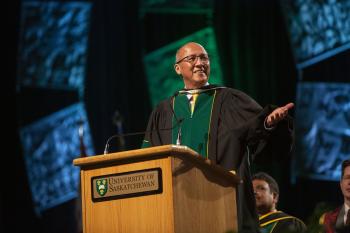Image Caption
Summary
Local Journalism Initiative Reporter
Windspeaker.com
It's a fight that is far from over, but recent Governor General’s award winner Dr. Gerald McMaster says progress has been made on the inclusion of Indigenous artists over his 40-year career as an exhibition curator.
“I have a tremendous amount of pride…in those who are my peers and colleagues over the years who fought alongside to make space, to have institutions make space for contemporary Indigenous artists and for even historic material to say ‘This is important. This is Canada. This is Indigenous territory. Always has been’,” said McMaster.
“The work of me and my colleagues over the years (has been) to argue that Indigenous artists need to be in art museums,” he said, not restricted to ethnographic museums with the rest of Indigenous culture.
McMaster was nominated for the Governor General’s award by Sara Angel, founder and executive director (with Jocelyn Anderson, deputy director) of The Art Canada Institute, and Aileen Burns, co-executive director and CEO (with Johan Lundh) of Remai Modern.
In their nomination they say, “McMaster has played a critical role in transforming the presentation of institutional collections of Indigenous art and in bringing together the historical and the contemporary to change the conversation around permanent collections.”
McMaster, a member of the Siksika Nation in Alberta, now resides in Toronto. He is one of two Indigenous recipients of the 2022 Governor General’s Awards in Visual and Media Arts. He won this year’s Outstanding Achievement Award.

David Ruben Piqtoukun, a celebrated carver, sculptor and printmaker from Paulatuk, Inuvialuit Settlement Region and who now lives in Plainfield, Ont., won in this year’s Artistic Achievement Award in the Visual Arts category. Nine awards were presented by a peer committee that included Kahnawá:ke-born visual artist and graphic novelist Walter Scott.
Indigenous peers, says McMaster, can “make more nuanced, subtle arguments in favour” of the work undertaken by Indigenous candidates.
“Subtle” is the word McMaster latches on to when he talks about the changes he has seen in his role as curator.
“The fact that we speak colonial languages some might say influences the way we see the world, and the fact that we’re trained in universities that are western based (and) institutions are western based, the ways of doing things in museums have a long history of the west. It’s been very difficult to find curators or individuals who would have an alternative way of seeing and an alternative way of doing exhibitions and I think that’s one thing we’re on the verge of doing,” said McMaster.
Take the display of moccasins, for example. McMaster notes that most museums will present moccasins as if they are on a shelf in a store, toes pointed out toward the viewer.
“But I do it the other way because moccasins in the old days were made for me and for you. When you’re sitting on the ground, you look at your moccasins and how lovely they are and they kind of grow from your foot outwards. To me I would put the moccasins that way, so it looks like their toes are sticking up. It’s really the design on the moccasin is made for you, not for other people to admire. It’s for you to admire. It’s self-directed in other words,” said McMaster.
McMaster has been working with Indigenous artists for four decades, creating exhibits both inside and outside institutions. He has a unique eye, having trained earlier as an artist himself and trained later as an academic. But that formal training is complemented by discussions with knowledge keepers, Elders and Indigenous communities to discover their histories and worldviews.
It doesn’t escape him that much of what is displayed in and collected by museums was taken from Indigenous peoples “when it was forbidden for cultures to practise their ceremonies, their everyday life, what they wore, and all that was forbidden, so it became collected by institutions.”
Indigenous communities are slowly finding ways to collaborate with institutions or repatriate their items, says McMaster. And in so doing, the younger generation is starting to relearn their culture.
It’s in this younger generation that McMaster puts much hope.
“Young people, young academics, young artists are really charting interesting courses on their own. That’s what I see happening today, this new direction and a stronger feeling of history, culture, identity,” he said.
While Indigenous curators aren’t numerous, Canada still numbers more than the United States, McMaster points out. Starting from the top, the National Art Gallery in Ottawa has Indigenous curators, and so do many other art galleries across the country.
McMaster says he never anticipated winning a Governor General’s award and quickly points out, while laughing, that it wasn’t around when he started as a curator. The inaugural award was presented in 1999 and the first exhibition “of note” that McMaster curated was in 1985 in Amsterdam where he and a number of his artists and supporters attended.
He has done much since then, including working at such institutions as the Art Gallery of Ontario, the Smithsonian Institution’s National Museum of the American Indian, and the Canadian Museum of History. He was chosen as Canadian curator to the 1995 Venice Biennale and the 2018 Venice Architecture Biennale; Canadian commissioner to the 2010 Biennale of Sydney; and artistic director to the 18th Biennale of Sydney in 2012.
Still McMaster admits Indigenous artists and Indigenous curators “never knew it would grow to this. We all hoped. We all fought for it. We all rallied together, whenever we could get together, to think of ways in which we could push the envelope a bit further, and always working with artists and trying our best. And so when I look back on it now … and see all the young people, I have a tremendous amount of pride with what’s happening.”
Local Journalism Initiative Reporters are supported by a financial contribution made by the Government of Canada.

